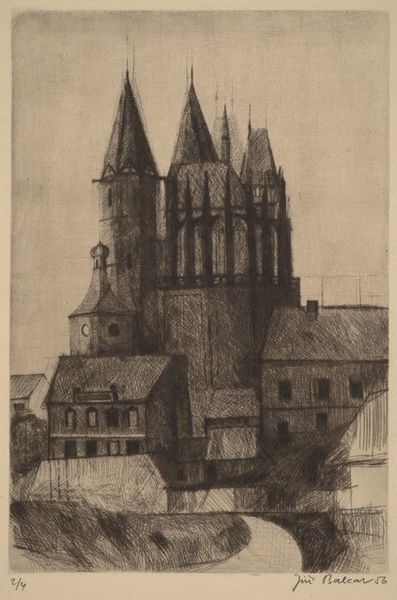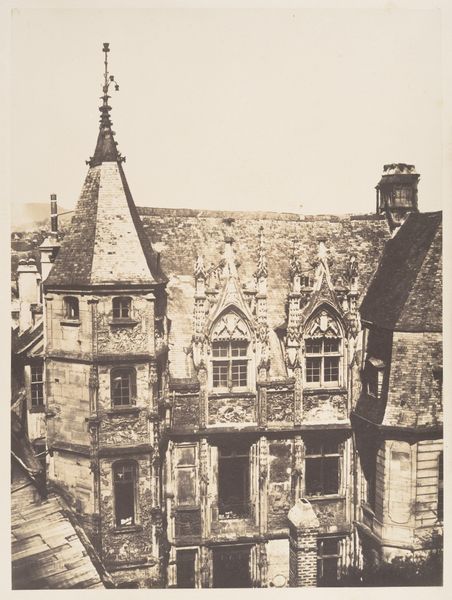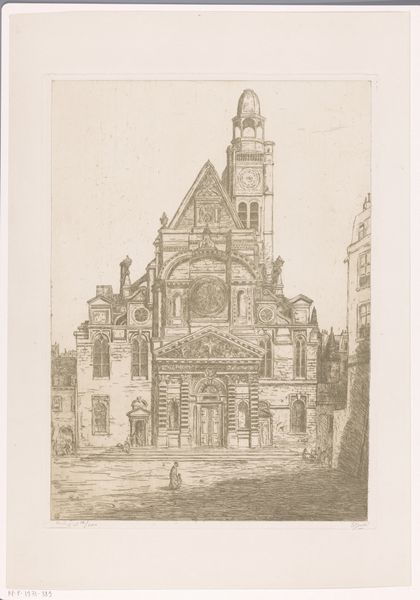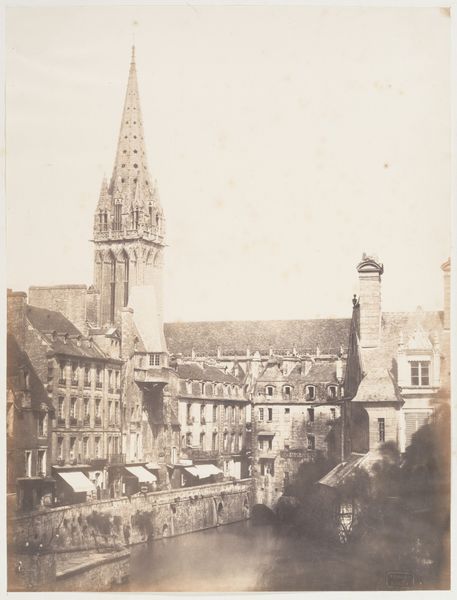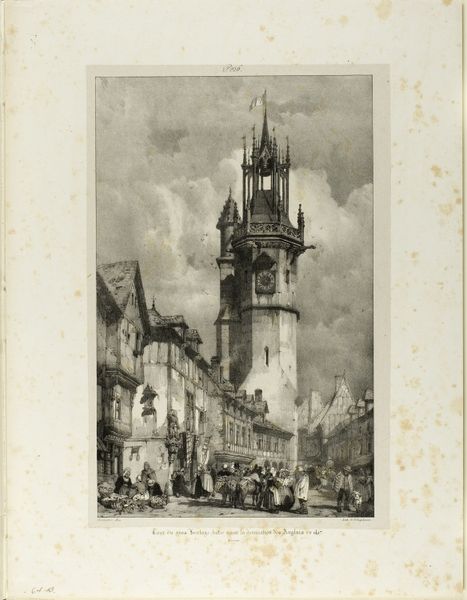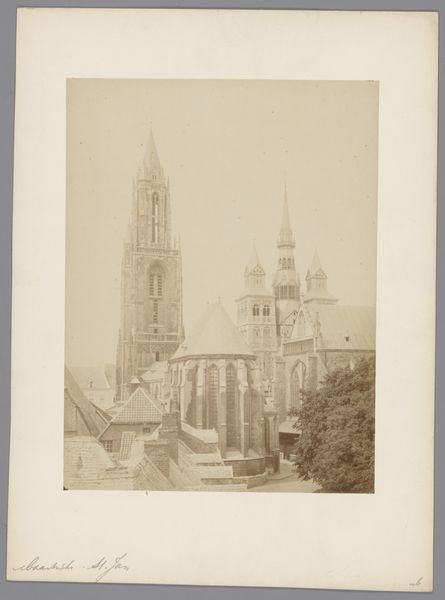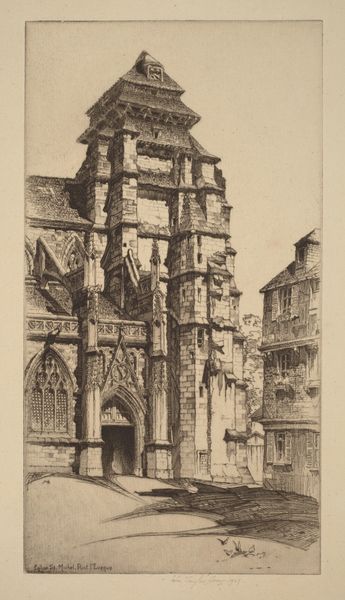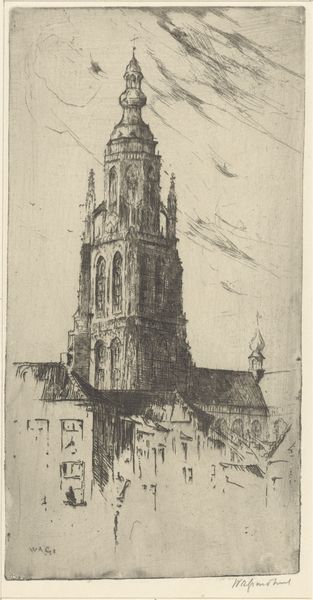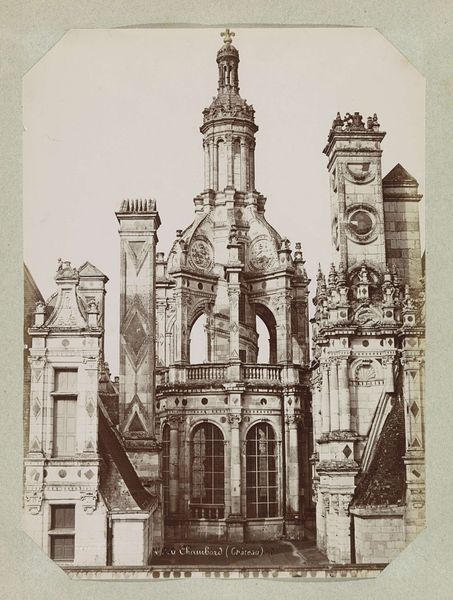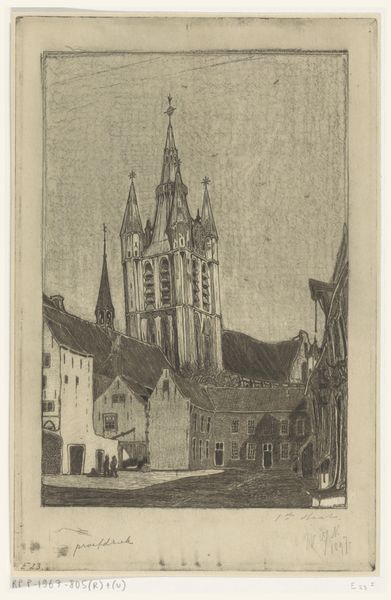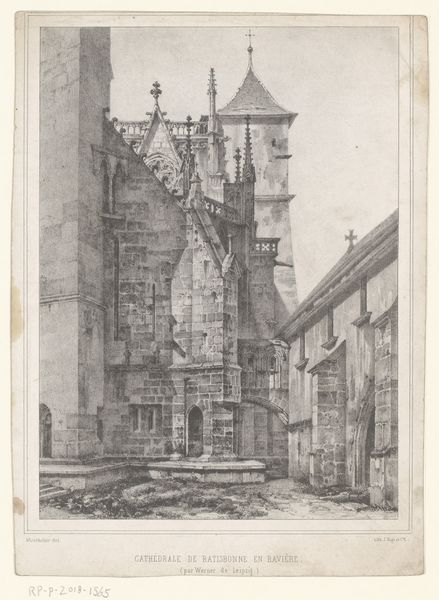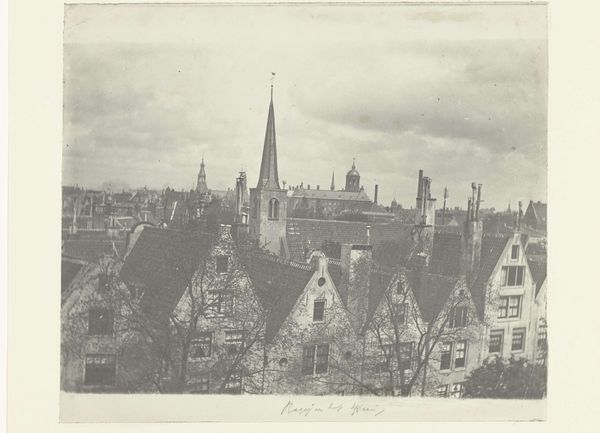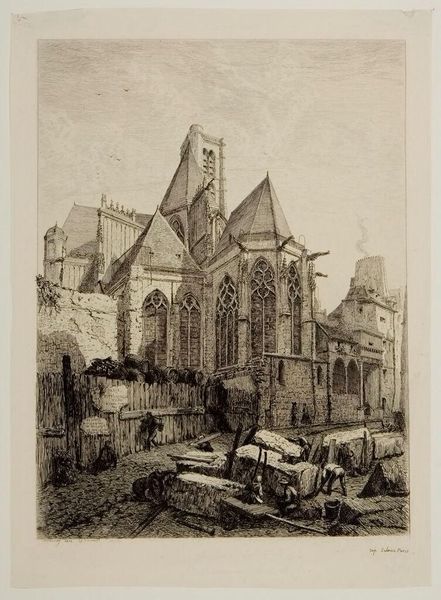
print, etching
# print
#
etching
#
cityscape
#
realism
Dimensions: plate: 28.89 × 21.91 cm (11 3/8 × 8 5/8 in.) sheet: 42.23 × 33.18 cm (16 5/8 × 13 1/16 in.)
Copyright: National Gallery of Art: CC0 1.0
Curator: Here we have Samuel Chamberlain's etching from 1931, "Senlis from a Crow's Nest". It captures a striking view of the French town. Editor: It has a somber quality. The heavy lines create dense, almost suffocating architectural forms that dominates the composition. I can almost feel the weight of history pressing down. Curator: Interesting, isn't it, how the composition guides us? Chamberlain's meticulous attention to line weight and density creates a visual hierarchy. Notice how the cathedral's spire aggressively pierces the sky, an upward thrust offset by the density of the surrounding buildings. Editor: It speaks of aspiration against constraint, perhaps? The spire, traditionally symbolic of spiritual reaching, looms above a complex, grounded cityscape. There is that visual interplay, but what feelings did Chamberlain have of these ancient buildings that makes this piece resonate on an artistic level. The artist himself having had this specific elevated viewpoint tells a narrative of authority. Curator: Consider the etcher's medium: printmaking relies on precision. See how the details, rendered so meticulously, are flattened somewhat by the printmaking process. We have an intricate spatial structure being delivered on a completely flat medium. The hatching and cross-hatching build texture but also reinforce this overall sense of the flattening of space, no? Editor: True, it is about depth. Beyond the technique, there's a palpable reverence for the past embedded in the image. European cities have always played this symbolic role and this piece delivers its significance. One thinks about that enduring legacy in how they mirror our identities and inform us culturally. Curator: I appreciate you observing how this historical continuum shows up to give the architecture presence here. By examining it formally, looking closely at line, composition, and spatial organization, the artwork presents a structure built of history and aesthetics. Editor: A testament to visual language—cultural memory etched in light and shadow. The architecture represents cultural relevance of a country steeped in historic roots, whether intended or unintended it prevails for all who consume this artwork. Curator: Precisely. And in understanding its construction, perhaps we can start to unlock its layered meanings. Editor: Indeed, Samuel Chamberlain allows us a bird's-eye view into not just a city but also a piece of ourselves.
Comments
No comments
Be the first to comment and join the conversation on the ultimate creative platform.
